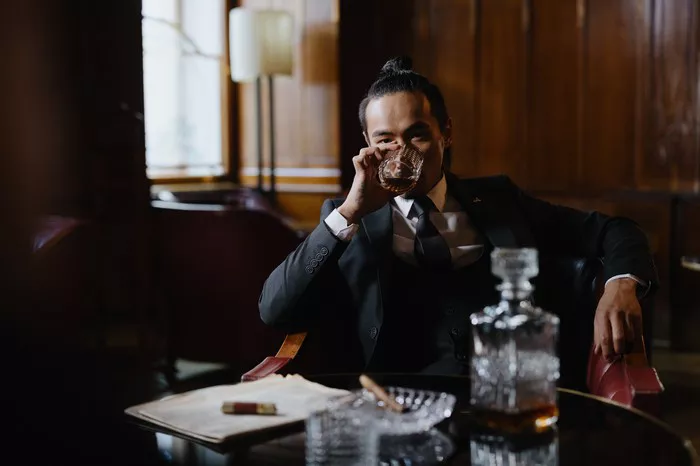The world of liquor spirits is a rich and diverse landscape, encompassing a wide array of alcoholic beverages that have been enjoyed for centuries. From the art of distillation to the complexities of flavor profiles, liquor spirits offer a fascinating journey for enthusiasts and connoisseurs alike. In this professional guide, we will delve into the captivating world of liquor spirits, exploring their history, production methods, major categories, and the intricate art of tasting and appreciating these exceptional libations.
The Historical Journey of Liquor Spirits
The origins of liquor spirits trace back to ancient civilizations where the process of distillation was discovered and perfected. Distillation is the fundamental technique used to create spirits, and it involves heating a liquid to separate its components based on their different boiling points.
Ancient Beginnings: The earliest records of distillation date back to ancient civilizations, including the Chinese, who used it to produce alcohol as far back as the 8th century. In the Middle East, the art of distillation was refined by Arab alchemists, and it was later introduced to Europe.
Monastic Distillation: Monasteries in medieval Europe played a significant role in the development of distillation techniques. Monks used distillation to create medicinal elixirs and herbal remedies, eventually leading to the production of spirits like brandy.
The Birth of Whiskey: Scotland and Ireland are often credited with the birth of whiskey, as the Gaelic term “uisce beatha” means “water of life.” These countries perfected the distillation process and created their own unique styles of whiskey, which became world-renowned.
Global Influence: Over time, the art of distillation spread across the globe. Different cultures began producing their own distinctive spirits, such as rum in the Caribbean, tequila in Mexico, and vodka in Russia.
Prohibition and Bootlegging: In the early 20th century, the United States experienced the era of Prohibition, leading to the illegal production and distribution of spirits known as “bootlegging.” This period had a profound impact on the spirits industry, leading to the development of innovative cocktails and the emergence of iconic figures like Al Capone.
The Distillation Process: From Mash to Spirit
The distillation process is the heart of spirit production, where alcohol is separated from the base ingredients to create concentrated liquor spirits. While the specific methods may vary depending on the type of spirit, the basic principles remain the same.
Fermentation: The process begins with fermentation, where natural sugars in grains, fruits, or other fermentable materials are converted into alcohol by yeast. This results in a liquid known as “mash” or “wash,” with varying levels of alcohol content.
Distillation: The mash is heated in a still, which causes the alcohol to vaporize, rise, and condense. The distillation process typically involves multiple distillations to increase alcohol concentration and refine the spirit’s flavor profile.
Heads, Hearts, and Tails: During distillation, the distillate is divided into three parts: the “heads” (initial distillate), the “hearts” (the desired distillate containing the pure spirit), and the “tails” (the end of the distillate). The hearts are collected for maturation and bottling.
Maturation: Many spirits, such as whiskey, rum, and brandy, undergo a maturation process in wooden casks. This aging imparts complex flavors and aromas to the spirit as it interacts with the wood.
Bottling: After maturation, the spirit is filtered, diluted to the desired proof with water, and bottled. Some spirits are also blended to achieve consistent flavor profiles.
Major Categories of Liquor Spirits
Liquor spirits come in a wide range of categories, each with its unique characteristics and production methods. Let’s explore some of the major categories that define the world of spirits:
Whiskey: Whiskey is a broad category of distilled spirits that includes Scotch whisky, Irish whiskey, bourbon, rye whiskey, and more. Whiskey is typically made from fermented grains and aged in wooden casks, resulting in a wide range of flavors and styles.
Rum: Rum is a sugarcane-based spirit known for its versatility. It comes in various types, including light, dark, spiced, and aged rums. The aging process and origin greatly influence the flavor and aroma of rum.
Vodka: Vodka is celebrated for its neutrality and purity, as it is typically distilled to a high proof and undergoes rigorous filtration. Vodka is known for its clean and crisp taste and is a key ingredient in numerous cocktails.
Gin: Gin is a spirit infused with botanicals, primarily juniper berries. This aromatic infusion gives gin its characteristic flavor. Varieties of gin include London dry gin, Old Tom gin, and botanical gin.
Tequila: Tequila is distilled from the fermented juice of the blue agave plant. It ranges from unaged, clear “blanco” tequila to aged “reposado” and “añejo” tequilas, which offer a more complex flavor profile.
Brandy: Brandy is produced from the distillation of fermented fruit juice or wine. Cognac and Armagnac, both made from grapes, are well-known brandies, while fruit brandies like apple and pear brandy are made from specific fruits.
Cognac and Armagnac: These French brandies are renowned for their craftsmanship and aging processes. Cognac and Armagnac come from different regions in France and offer distinct flavor profiles.
Liqueurs: Liqueurs are flavored spirits often sweetened with sugar. They come in a vast array of flavors, including coffee, chocolate, fruit, herbal, and nut liqueurs. Liqueurs are frequently used in cocktails and desserts.
Mezcal: Mezcal is a smoky and distinctive Mexican spirit made from agave plants. It is known for its artisanal production methods and diverse flavor profiles based on the agave variety and region.
Absinthe: Absinthe is a high-proof spirit flavored with botanicals, including wormwood. It has a strong anise flavor and a rich history, often associated with the bohemian lifestyle.
Conclusion
The world of liquor spirits is a fascinating realm that combines history, craftsmanship, culture, and innovation. From the ancient origins of distillation to the global impact of iconic spirits, the industry continues to evolve and captivate enthusiasts and connoisseurs.


